November ’18
Porcupine Quill Box
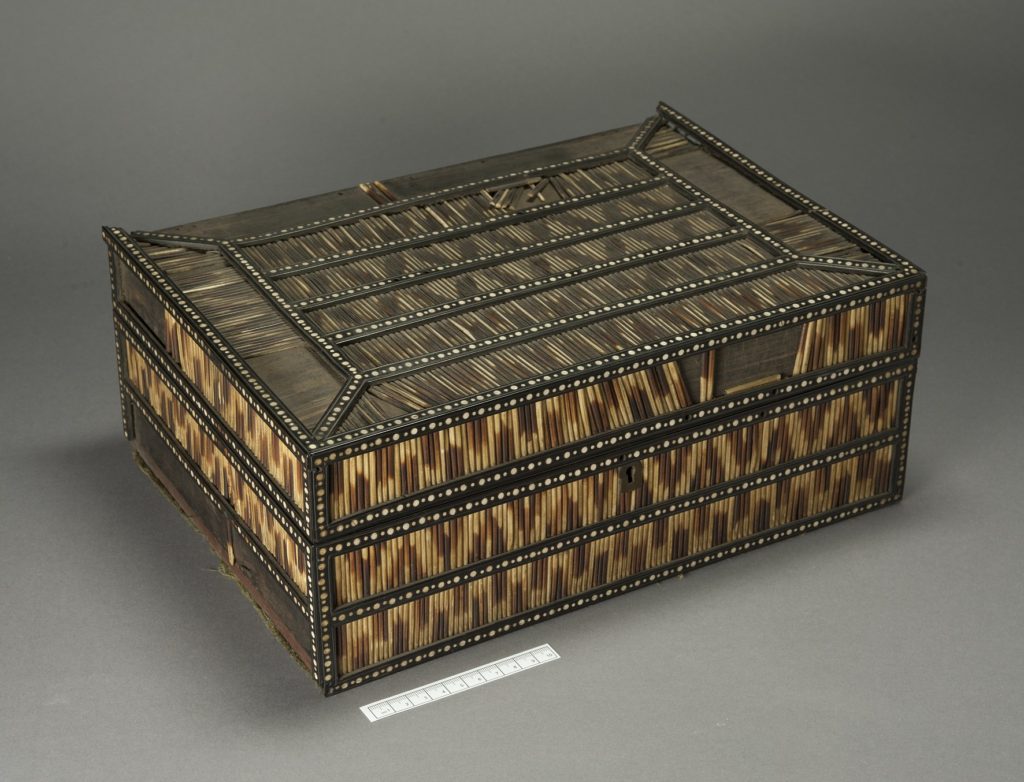
November’s ‘Object of the Month’ is a decorative box with Indian crested porcupine quill designs on the exterior and it comes from Beamish Museum.
The box was donated to Beamish Museum in 1975 by a large family of collectors. It was one of several hundred objects received from the family home in Spital Toungues, many dating to the early Victorian period. The quill box originates from Matara, Ceylon. The accession information and comparative objects suggest a date from 1850-1900. The internal ivory inlay design is of two lions on either side of an urn with a plant under the text “MATURA”. The lion is a symbol of Sri Lanka dating back to the pre-colonial era. Lions have been symbolically important in Sri Lanka since the introduction of Buddhism in the third century BCE when the lion came to represent strong character and wisdom, one of the seven jewels of royal power, and Buddha himself.

As an Anglo-Ceylonese object the box blends aspects of English and Sri Lankan culture. The internal decoration is Sri Lankan in character; however, the external decoration and the function of the box are heavily influenced by English notions. Local resources and craft skill were utilised to create a new form of objects conforming to Victorian tastes. Traditionally ivory was used in Buddhist settings; however, with the arrival of Europeans, ivory was carved for western tastes. The external decoration shows influence of the Victorian penchant for decorated boxes, the use of natural materials, and geometric orientation. Decorative carved wooden boxes are significant throughout European folk art. The use of natural materials is seen in British folk art, such as straw work, and the use of the natural coloration of the porcupine quills for geometric pattering is reminiscent of the British folk-art traditions of decorating boxes.
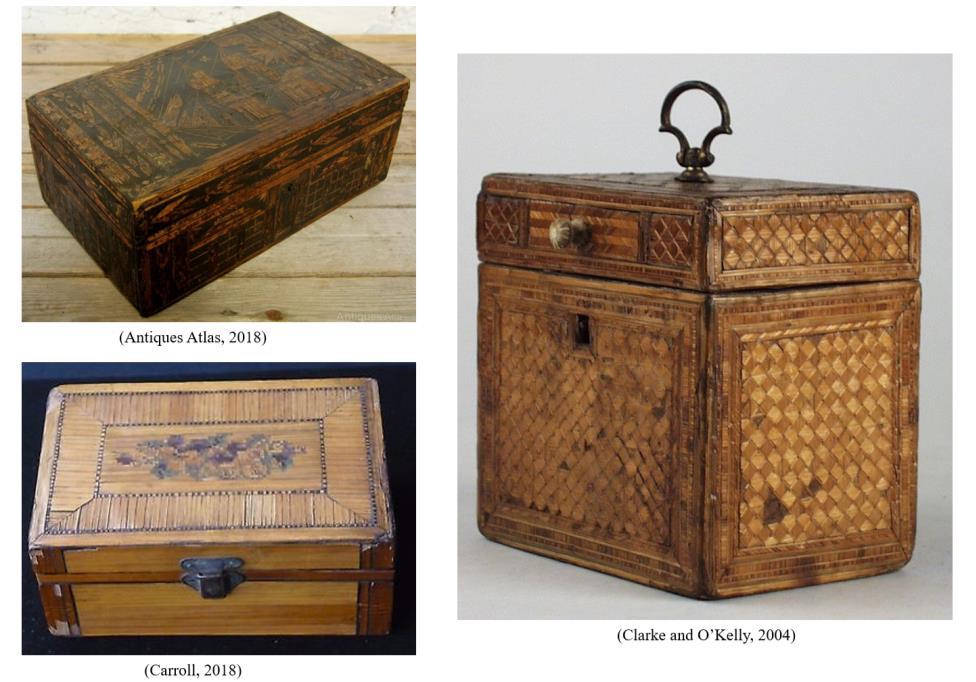
The box would most likely have functioned as a display object within the original owner’s home; the decoration is both aesthetic and symbolic of travel and wealth. Discerning what the box was used to hold is more ambiguous. The dip pen located within the box suggests it could have functioned as a writing box. The intentional decoration of a writing box with porcupine quills would have been a pun playing on the western association of quill pens. More broadly, the quill box belongs to the tradition of souvenir objects that were brought back to England from throughout the Empire. The port Galle, north-west of Matara, was known for handicraft production for the export market. Tourists were known to stop in Galle to purchase ivory carved or inlaid boxes. Similar activities would have taken place in Matara. Similar objects were also purchased by Britons living in Ceylon, eventually making their way back to Britain and into museum collections.
Conservation
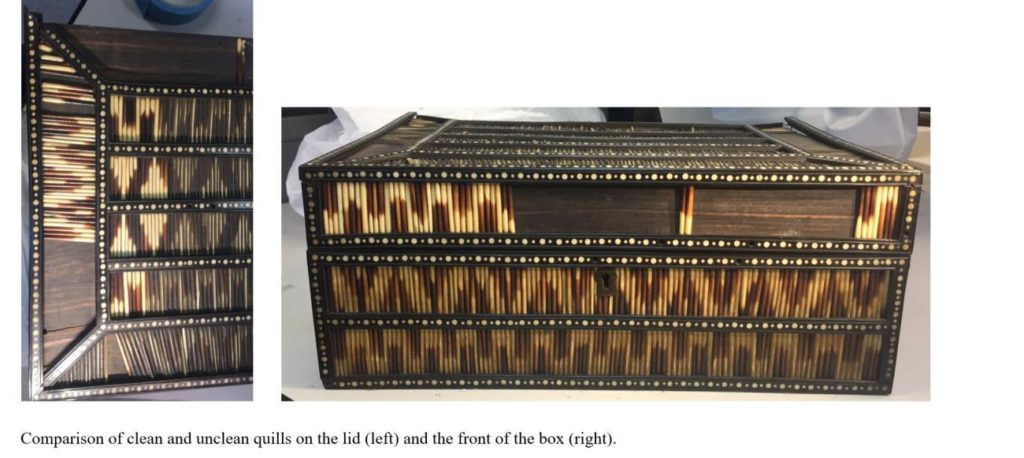
An initial cleaning of the quill box was carried out with a museum vacuum and a dry brush. Gauze was attached to the vacuum to prevent the loss of any loose quills.Testing was carried out to determine the best method for cleaning the quills. Dry methods were tested first because as a keratinous material the quills are hydroscopic. However dry methods were not deemed appropriate as the pressure required to remove the dirt would have been too damaging. As such an appropriate wet cleaning method was chosen, which removed the dirt significantly..
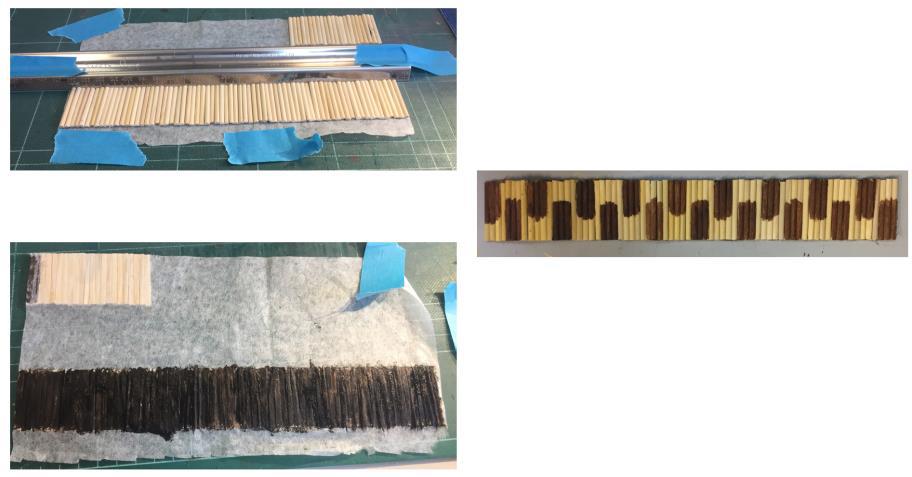
The wooden surfaces of the box and ivory inlaid panels were tested and cleaned using appropriate dry cleaning methods. Any dust build up under the panels was able to be removed with tweezers. Three quills, which had been previously adhered to the back of the lid and were not thought to be in their original places were removed carefully and the remaining adhesive was removed mechanically. The copper alloy fittings and the iron key were all cleaned using cotton wool swabs with an appropriate solvent to remove dirt. Any corrosion was removed mechanically and the metal was consolidated after treatment to help protect it from further deterioration.
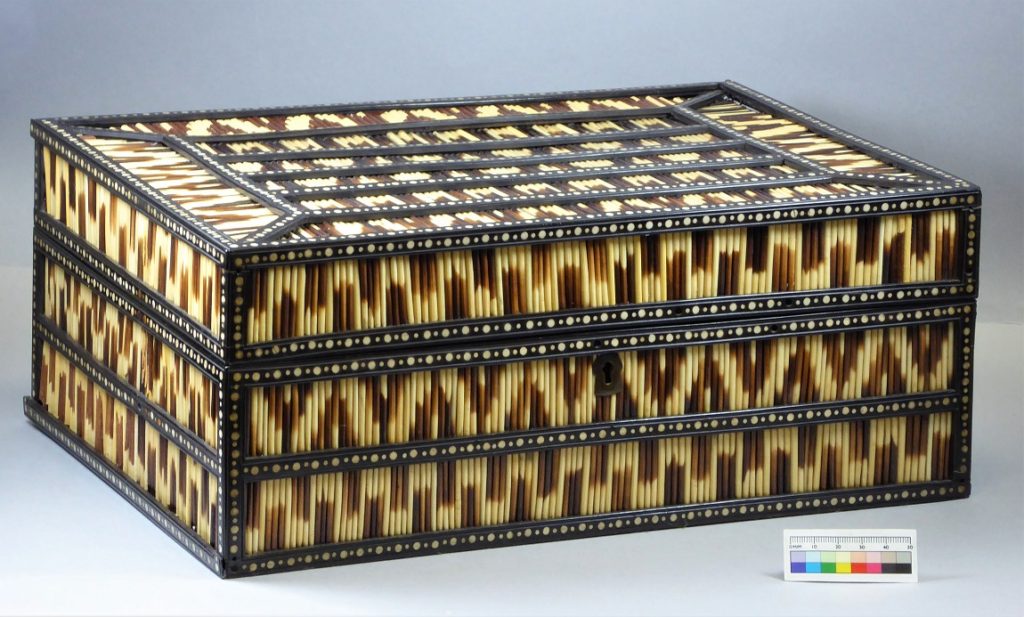
After initial testing, replica quills were fashioned from 1/8-inch poplar wood dowels. It was decided to pursue the use of wooden replicas given the material’s workability and compatibility with the materials of the box. After testing multiple methods, the replicas were colour-matched using water colours and acrylic paints.

A combination of original detached quills and replica quills were used to fill gaps in the original decoration and the replica quills were colour matched using watercolour paints and consolidated to mimic the slight shine of the original quills. For the areas of the box where entire panels were missing, replica panels were made by adhering replica quills onto Japanese tissue paper. These could then be slotted into the appropriate sections and would be removable if necessary. Finally the detached edging panels were reattached using the original nail holes where necessary and secured in place using a suitable adhesive.
Stay tuned for next month’s object!
